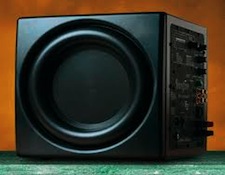It’s the time of year for saving money!

If you expect a subwoofer to perform optimally it has to be
set up correctly. This small fact has not been lost on premium subwoofer
manufacturers such as Velodyne and JL Audio. Most of their subwoofers have some
kind of built-in “expert system,” with automatic calibration to make it easier
to install them correctly. But what about subwoofers that don’t have any
built-in calibration or set-up features? Here’s my under ½ hour subwoofer
set-up method.
All rooms, regardless of their shape or size, have “room
nodes” where bass is augmented or reduced. And how do we discover where all
these spots are? We could plug our room dimensions into a chart or computer
program that will spit out set of specifications that can tell us what
frequencies and room locations could be potential problems, or we could take a
more empirical approach, which I call giving the subwoofer “the catbird seat.”
For this set-up you do need to be able to place the
subwoofer in your primary listening position, and maybe even IN your listening
chair. If your subwoofer is especially big or heavy, this may be a two-person
job, but the goal is to put the subwoofer as near to the same position as your main listening spot as humanly possible.
Once you have your sub in your favorite listening position
you need to hook it up and put a low frequency tones through it. If your system
is connected to a computer you could use a test tone suite, such as
“AudioTest.” I usually use a 40 Hz sine wave as a starting point, then a series
of sweeps from 20 Hz to 90 Hz. As the sweeps are playing I walk around the room
and listen to them. In some spots the test tones will be much louder than other
spots. As I walk around, I spend time listening in the spots where I could possibly
put my subwoofer. In some rooms with limited options I’ll pick the spot with
the most bass reinforcement as the final location for my subwoofer. In spaces
with more than one spot with augmented bass, I prefer to choose a subwoofer
location that has some, but not too much bass augmentation.

After I’ve chosen the spot where I think the bass is “best,”
I disconnect the subwoofer and move it to that location, and reattach it to my
system. Then I listen to more test tones (and measure their output levels via an
iPhone APP). Again I use sine-wave sweeps, but this time they are more
full-range from 20 Hz up to 3000 Hz. The goal now is to get levels where the
sub blends well with my mains. I also experiment with the crossover points,
usually trying 50, 60, 70, and 80 Hz and then listening for which one will
deliver the smoothest and most cohesive hand-off from subwoofer to main
speakers.
Usually this whole process takes less than ½ hour and the
final results yield a subwoofer location that will work well for all but the
most pernicious rooms.





